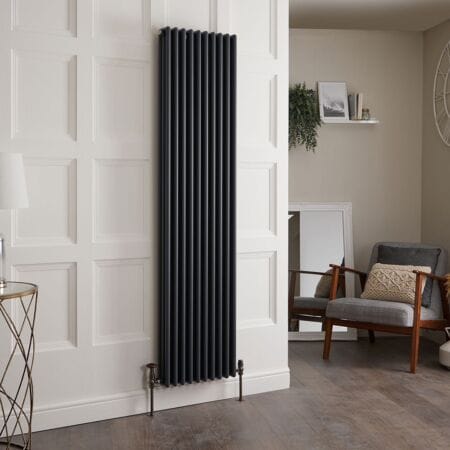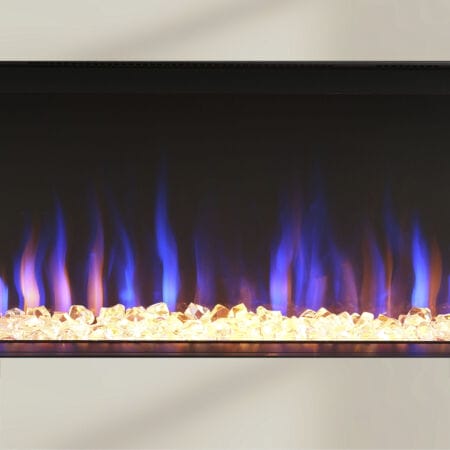Contents
ToggleWhat we'll cover...
A range of reasons that could lead to a radiator keep turning off, with an outline of the most common causes and diagnostics to help your heating return to top form.
Common causes of radiators turning off
Few things in life are more frustrating than settling down on a chilly evening to discover your radiator has decided to clock off early. Radiators switching themselves off, or failing to stay appropriately hot, can have a significant knock-on effect to the rest of your home, facilitating an unwanted chilly vibe throughout with mystery circumstances surrounding why.
Positively, in most cases, the cause for radiators turning off is simple and easy to fix without the need for a heating engineer or plumber. From a fiddly set of thermostatic radiator valves (TRVs) to trapped air or stubborn sludge, this guide will explore the most common causes as to why might a radiator keep turning off, and how to solve the issue in quick time.
Common cause 1: Thermostatic radiator valves
Thermostatic radiator valves, or TRVs, are the little numbered dials attached to the side of a radiator that enable you to control the temperature in individual rooms. They’re a game-changer when working properly, but a faulty TRV can often be the first suspect, and household enemy number one, if a radiator keeps turning off.
Why TRVs can turn your radiator off
- Sensitive sensors – If a TRV has overly sensitive sensors, it could falsely detect that the room is warm (perhaps from direct sunlight, for example) and shut off the flow.
- Sticking or blocked pins – The small metal pin contained within a TRV can become stuck in the closed position, preventing hot water from entering the radiator.
- Incorrect positioning – Should the thermostatic valve become trapped behind a settee or curtain, it could be tricked into thinking the room is hotter than it really is and switch off the radiator prematurely.
Quick fixes for TRV issues
- Inspect the surroundings – Ensure the TRV isn’t being blocked by curtains or furniture.
- Gently tap the TRV head – This can free a stuck pin in some cases, but don’t clobber down too hard.
- Unscrew and check the TRV head – Lightly press the pin beneath to see if it springs back. If it doesn’t, it is probably stuck.
- Lubricate or clean the pin – A careful pin cleaning process can often bring a TRV back to full force.
The fixes listed above will solve most TRV troubles, so if none of these methods work, it is probably time to replace your thermostatic radiator valves with new models.
Common cause 2: Boiler flow temperature
Radiators are reliant on a consistent flow of hot water to keep warm. If the boiler flow temperature is set too low – usually less than 65°C for most systems – the radiator might heat up to begin with but cool down very quickly. Contrastingly, excessively high flow temperatures can trigger safety cut-off settings, or cause TRVs to overreact to the heat.
Why boiler temperature matters
Radiators are reliant on a consistent flow of hot water to keep warm. If the boiler flow temperature is set too low – usually less than 65°C for most systems – the radiator might heat up to begin with but cool down very quickly. Contrastingly, excessively high flow temperatures can trigger safety cut-off settings, or cause TRVs to overreact to the heat.
Quick fixes for boiler temperature troubles
- Check the boiler control panel – Find the central heating temperature dial or digital display setting.
- Alter the flow temperature – Most systems strike the right balance with a flow temperature between 65 and 75°C.
- Monitor radiator performance – Check on your radiators or heated towel rails to see if the problem is resolved within an hour or two.
Essentially, finding the sweet spot for comfort and performance with your boiler flow temperature is key to preventing your radiators from keeping turning off.

Common cause 3: Air trapped in the radiator
Essentially, finding the sweet spot for comfort and performance with your boiler flow temperature is key to preventing your radiators from keeping turning off.
Quick fixes for airlocks
- Switching off the heating – Safety first, allowing important time to cool down.
- Bleed the radiator with a key – Slowly open the valve until you hear a hissing sound.
- Close the valve – Shut the valve when water has dribbled out; this means the air has left the radiator.
Our guide on how to bleed a radiator offers a more detailed insight into the steps listed above.
Common cause 4: Stuck lockshield valve
The lockshield valve is a distant cousin to the TRV. Typically, it is hidden beneath a cap and controls how much water flows through the radiator. When stuck or suffering from corrosion, they can cause radiators to heat up unevenly or switch off altogether.
Quick fixes for lockshield valves
- Locate the valve – The lockshield valve is usually positioned on the opposite side to the TRV.
- Turn gently with pliers – Even a minor adjustment can often restore flow to the radiator.
- Balance your radiators – When free, ensure that heat is distributed evenly throughout the system by following the advice in our radiator balancing guide.
Common cause 5: Sludge or blockages
If your radiator continues to turn off despite your efforts with all the other fixes, radiator sludge could be the catalyst. Over time, dirt, rust and limescale can build up within the heating system, restricting or blocking the flow of hot water.
Indicators of radiator sludge include:
- Cold spots at the foot of a radiator
- Radiators taking a long time to heat up properly
- Gurgling or kettling sounds emerging from the boiler
Usually, the effective removal of sludge involves a radiator power flush or chemical cleaning process, which is best left to a professional heating engineer.
When to reach out for help with radiators turning off
If you’ve made a good fist of all the quick fix recommendations listed in this article, and your radiator is still being somewhat of a diva, it could be time to reach out for professional assistance. Persistent problems can signify:
- Failing pumps or motorised valves
- Boiler sensor faults
- Complicated system balancing or sludge issues
With these types of issues, seeking expert help is the quickest and best route back to reliable warm radiators.
Keeping your radiators warm with BestHeating
Radiators that keep turning off by themselves are often fixable with a little bit of patience and a radiator bleed key. Begin with the simplest checks – TRVs, boiler temperature and trapped air – before digging into the more complex possible issues like lockshield valves and sludge.
If you do decide that your old radiator is beyond help, remember BestHeating is your go-to hub for stylish and efficient home heating solutions for an affordable cost.
Let us know in the comments below about your radiator switch off horror stories or fixes and upgrades, or get in touch with us via Instagram, Facebook or X.
John is a Research Specialist for the Best Heating Advice Centre, where for over nine years he has dedicated himself to demystifying home heating for our customers. He specialises in creating clear, data-driven guides and how-to articles by collaborating directly with our team of certified heating experts and product engineers.
His work, built on a foundation of journalistic research, has helped millions of readers make confident and informed decisions about their home heating. When he’s not breaking down the heat output differentials from radiators to heated towel rails, John fancies himself as a fine football and music connoisseur.









